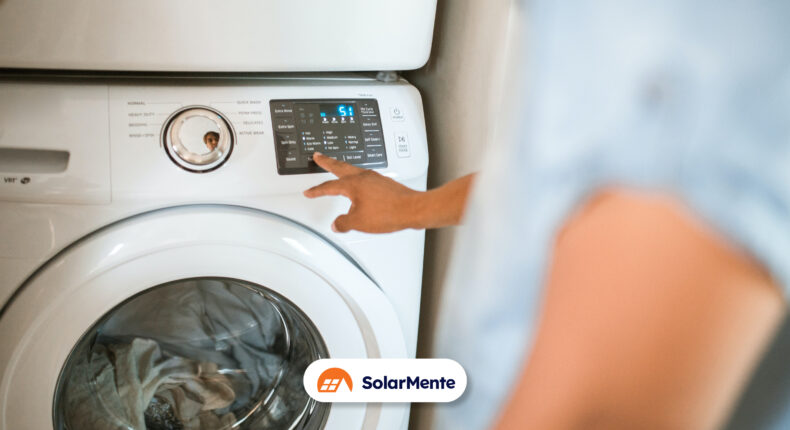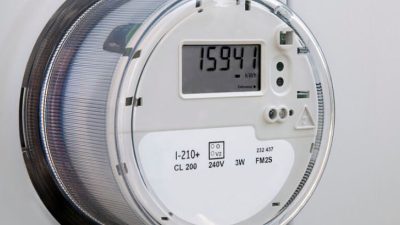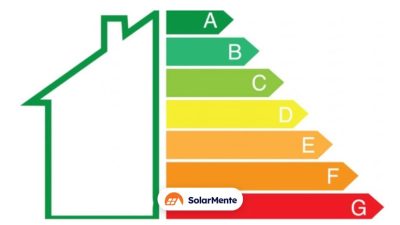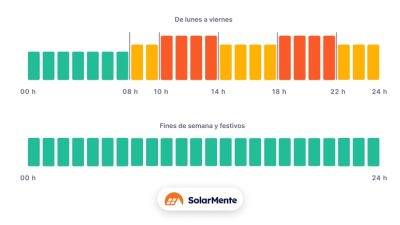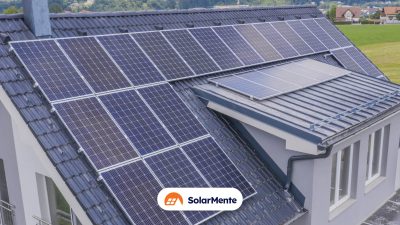Keeping the television on for hours at a time or not unplugging the mobile phone charger can mean more than a few surprises on your electricity bill.
Knowing which electrical appliances consume the most in the home allows you to reduce electricity costs and save energy.
The fact is that heating, together with electrical appliances, are the elements that consume the most energy in the home. Without going any further, according to data from the Institute for Energy Diversification and Saving(IDAE), 55.2% of the annual cost of an electricity bill is spent on the use of these appliances. This means that they are the main source of electricity expenditure.
This is why it is so important to know the consumption of our appliances and make rational use of them in order to increase economic savings and reduce our carbon footprint.
In this article we will go into detail on the following points:
-
How to calculate the consumption of a household appliance.
-
Which are the most energy-consuming household appliances?
-
Solar energy as an alternative source for real savings
How to calculate the energy consumption of an electrical appliance: 3 ways to use it
There are three ways to calculate the energy consumption of an appliance:
Consult the product’s technical data sheet.
Go to the specific appliance and look at the electrical power. This information is usually located on the back of the appliance or on the inside.
Have you got it? Now multiply this power (watts) by the time (hours) it is in operation.
From this formula, you will obtain the energy consumption.
Remember: this is an approximate formula because not all appliances run at full power throughout the day.
Take a look at the energy class
What information does the energy label on appliances provide?
Before you buy an electrical appliance or if you already have one installed in your home, look at the energy efficiency class and see how much the appliance consumes.
For example, if you are buying a washing machine, pay attention to the consumption per cycle.
Use a wattmeter or energy meter.
This instrument calculates the power used by each electrical appliance and thus the energy consumption over a given period of time.
It not only measures a particular appliance, but also allows you tofind out what the accumulated consumption of a household has been over a set period of time.
Which appliances consume the most energy?
Knowing how much energy the appliances in a household require, it is essential to understand the consumption of each appliance separately and, from there, to change habits or replace these devices with more efficient models that reduce their consumption.
These changes will help you save on your electricity bill, avoiding surprises at the end of the month and respecting the environment by using energy responsibly.
The energy consumption of an electrical appliance depends on three variables: size, energy class and time of use.
The following list of household appliances shows the average annual energy consumption in the Spanish residential sector, according to the report produced by the IDAE and Eurostat:
Note: these numbers represent the latest data provided by both institutions. They may vary over time.
| Appliance |
Electricity consumption (kWh) |
Average consumption kWh/year |
| Refrigerator | 22,4 % | 662 |
| Freezer | 19,1% | 563 |
| Television | 8,9 % | 263 |
| Dryer | 8,6 % | 255 |
| Washing machine | 8,6 % | 255 |
| Dishwasher | 8,3% | 246 |
| Oven | 7,8 % | 231 |
| Stand-by | 7,8 % | 231 |
| Computers | 7,8 % | 172 |
| Other | 2,6 % | 76 |
1. Refrigerator and freezer
According to this table of appliance consumption, the top ranking appliances are the refrigerator and the freezer.
The indicated power does not indicate that consumption is only influenced by this factor, but by the time of use.
Think about it for a moment: which appliances stay on all day long?
That’s right. Refrigerators and freezersare rarely switched off and consume energy 24 hours a day.
The average annual consumption of a refrigerator is 662 kWh per year. This average tells us that there is still a long way to go in terms of performance, as the new energy-efficient models (A-C labels) consume around 175 kWh/year.
However, in addition to getting a more efficient model, you can save energy by applying the following tips:
-
Clean the refrigerator regularly so that air can circulate freely without obstructions.
-
Use a suitable temperature, neither too low nor too high. An approximate range to avoid over-consumption would be between 4ºC and 6ºC. This way the food will not be damaged by low temperatures.
-
Do not install the fridge near heat sources such as the oven or radiator so that the air can circulate well. The higher the outside temperature, the more energy is wasted.
-
Defrost the refrigerator once or twice a year. If frost has formed on the fridge by more than 3 mm, clean the fridge as well. This consumes up to 30% more energy.
-
Switch the appliance off if you are going to be away from home for a longer period.
The same applies to the freezer. It remains in operation all year round and its consumption is approximately 563 kWh per year. Remember to switch it off if you are not going to be at home.
2. Washing machine
The washing machine accounts for 8.6% of electricity consumption and is another of the household appliances that uses the mostenergy in the home.
This 255 kWh per year could be reduced to 180 kWh per year by using models with a higher energy class.
How can we reduce the consumption of this appliance?
With small changes in our habits, such as washing with cold water or using the “eco” programme, we can reduce energy consumption. Water heating alone accounts for 80% of electricity consumption.
3. Tumble dryer
Dryers are a little-used household appliance in Spain. Thanks to the climate of this geographical area, clothes can be dried in the open air.
This is undoubtedly an important benefit that increases economic savings in the colder seasons, bearing in mind that it is a major energy consumer and essential, above all, in humid climates with little sunshine.
4. Television
How much does it cost to have the TV on all day?
There is a myth about the television, considering that this electrical appliance has little impact on the electricity bill. But these devices consume an average of 263 kWh per year in Spanish households.
We often leave the TV on for hours at a time, but do we really pay attention to it?
If this is your case, the best thing to do is to turn off the TV to avoid unnecessary costs.
With small changes in your daily habits you can reduce the consumption of this electrical appliance. Here are some practical tips:
-
Don’t leave the TV on standby . Phantom consumption can save up to 10% of electricity.
-
Use power strips or power strips with switches to turn off all connected devices.
There are even smart models that detect if the appliance is on standby and will turn them off automatically.
5. Dishwasher
Although the dishwasher also has a significant expense, it is a better alternative to hand washing.
The reason lies in the water consumption of washing dishes in the traditional way, with up to 30 litres of water, according to OCU data.
6. Oven
The oven is another of the appliances that consumes the most energy, accounting for 8.3% of the total.
Therefore, as with the rest of the appliances analysed, it is advisable to opt for an appliance with high energy efficiency. You will appreciate the savings compared to older models.
Even so, applying these tips will give you a plus in your monthly savings.
Keep the appliance clean and do not open the oven too many times during cooking. A lot of heat is lost and it will need more time to finish the process.
In addition, turning it off before it has finished cooking allows you to take advantage of the residual heat and reduce consumption. This advice also applies to glass-ceramic hobs.
7. Computers
Computers, although they are lower down the list, should not be underestimated.
The use of these devices has increased our monthly electricity bills due to the introduction of teleworking in many companies.
In short:
-
Turn it off if you are not using the device, otherwise it will continue to consume energy.
-
If you use a laptop, do not keep it connected to the mains all day. If the battery is charged, this step is unnecessary. In addition to increasing energy consumption, it is harmful to the device.
8. Other equipment
The last place in the ranking is taken by other household equipment such as air conditioners, swimming pool heating, saunas, lawn mowers, etc.
Let’s take the example of air conditioning.
Imagine you have an appliance that consumes 2 kW and you have it on for 5 hours a day. The multiplication would give us a consumption of 10 kWh/day.
Well, if we use this for 30 days, the monthly consumption would be 300 kWh per month.
This is a significant cost, but it is only used during specific seasons of the year and cannot be considered as one of the most energy-consuming appliances in our daily routine. Moreover, this air-conditioning appliance is not available in every household.
The same is true for swimming pools. They are used in specific seasons and not all homes have them.
Beware of stand-by consumption
Stand-by consumption, also known as phantom consumption, is the energy that our devices continue to consume once they are switched off.
The television is one of the main devices that consumes the most energy when it is plugged in, but we can also add other elements to the list, such as the router or the printer. Even other less conspicuous components such as smart speakers or the robot hoover stand out.
If we look back at the table of the appliances that use the most energy, idle mode is responsible for 7.8% of the average annual consumption.
Therefore, unplugging these devices or adding a power strip that makes it easier to turn off several elements at the same time will stop consuming so much energy.
And don’t forget about mobile phone or computer chargers either.
Restricting this consumption by changing your consumption habits will reduce your electricity bills by between 30 and 60 euros a year.
Using solar energy to reduce your electricity bill
Managing energy consumption in your home by changing your habits will allow you to keep the appliances that consume the most energy at bay.
However, investing in electrical appliances with high energy efficiency guarantees lower energy consumption and greater financial savings.
Finding out which appliances consume the most in your home is essential in order to know how much energy they are consuming. If you apply the advice given in this article but do not notice a significant reduction, it is worth considering the purchase of a new appliance.
In any case, the energy crisis has been haunting us for several years and price volatility cannot be controlled.
As a solution to this problem, we have clean, renewable sources such as solar energy, so you can produce your own energy and reduce the cost of electricity by up to 50%.
>> Discover other ways to save on your electricity bill.

